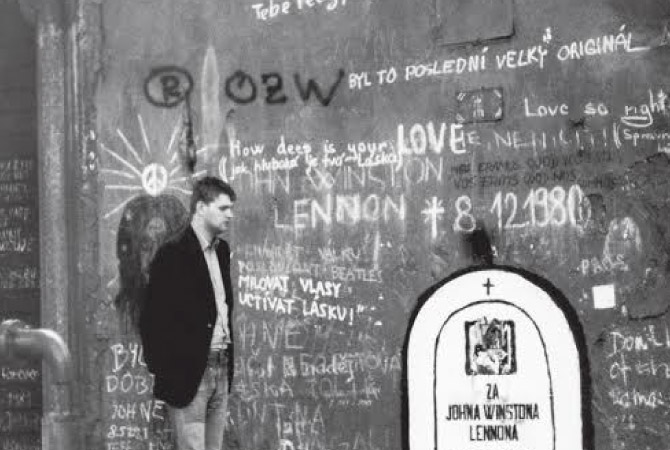-
7 12 15 20 22 23
Walk down Mostecká and take the first turning on the right, Lázeňská, which will bring you to Velkopřevorské náměstí.
The inscriptions on the wall surrounding the Maltese Garden first appeared in the 1960s, and since the 1970s it was called the “Wailing Wall”, due to the lyrical character of the inscriptions on it. After the death of John Lennon (October 9, 1940 - December 8, 1980), someone wrote “For John Lennon” above the iron plate which had previously served as a water pipe and drew a cross. Spontaneously, people began to bring candles, flowers and photos of the singer to this symbolic tombstone, and to write inscriptions on the wall.

The police repeatedly, but unsuccessfully, repainted the wall, and the tradition of drawing and repainting, which continues to this day, was established. Every winter, young people would spontaneously meet here on the anniversary of Lennon’s death and after 1984 these gatherings grew into public demonstrations against the regime and were suppressed by the police. From the mid-eighties, petitions were signed here for the release of political prisoners, the legalization of civilian service as an alternative to military service, for the departure of Soviet troops, and the removal of nuclear weapons from Czechoslovakia. In 1985, about a thousand participants joined a march through Prague and proposed steps to improve the conditions of young people in Czechoslovakia. In 1988, Tomáš Dvořák and Hana Marvanová founded Nezávislé mírové sdružení (Independent Peace Association) which planned demonstrations and discussion forums; the leaders of the association were imprisoned for their activities. (Václav Havel said in his speech to the German Booksellers Association that at the cost of imprisonment the association “managed to rehabilitate the word ‘peace’ and restore its original meaning … one important word has been rescued from total debasement.”)
The John Lennon Peace Club was formed in December 1988 in reaction to the imprisonment of Dvořák and Marvanová, and openly rejected the contradiction between verbal proclamations about peaceful coexistence and the actions of government officials. The J.L. Peace Club organized alternative music events, campaigned for the release of political prisoners and participated in remembrance ceremonies to the victims of the student protests in Beijing. After the November 1989 Velvet Revolution, the club devoted itself to organizing cultural events. The John Lennon wall is still associated with pacifism and, for example, on January 15, 2017, a protest march for Aleppo, highlighting the humanitarian disaster in Syria, stopped here on its journey from Berlin to Syria.

It is more difficult to determine John Lennon’s relation to peace activities. Lennon and the Beatles are connected to the fight against segregation as they refused to play in segregated stadiums in the southern United States and in white-only clubs in 1964 and included this condition in their contracts: “We never play to segregated audiences and we aren’t going to start now, I’d sooner lose our appearance money,” said John Lennon. The song “Give Peace and Chance” became the anti-war song in US protest rallies against the Vietnam War.
The message of “Bed-Ins for Peace” with Yoko from the Hilton Hotel is, however, vague and Lennon’s deification, too, is controversial, as he had a stake in the cult. As a person, John Lennon behaved violently, but confessed this in an interview just before his tragic death and apologized: “I am a very violent person who has learned to behave nonviolently and regrets his former violence.”
- Wikipedia on the Lennon Wall: https://en.wikipedia.org/wiki/Lennon_Wall
- Daily Mirror on John Lennon and Violence: https://www.mirror.co.uk/3am/celebrity-news/john-lennons-dark-side-domestic-6481985
Where next?
The next stop on the trail, the monument in honor of Milada Horáková, is about ten minutes from here. With the wall on your right and the French Embassy on your left, take Lázeňská, which will lead you to Mostecká. Here turn left and walk up Mostecká to reach Malostranské Náměstí (Malostranské Square). From the Square take Tomášská, go straight on and the first street on your left will lead you to the monument of a nightingale sitting on a microphone.